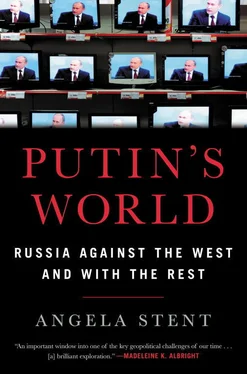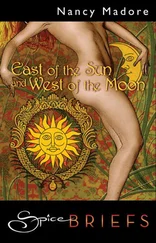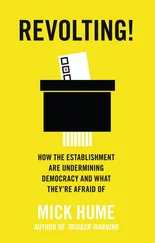Nevertheless, it is undeniable that Russia’s stake in Ukraine is far greater and more compelling than is that of the United States or many members of the EU. Ukraine is an existential question for Russia, as Russia is for Ukraine.
Kyiv is 5,000 miles away from Washington, and until now Ukraine has not been considered a core interest for the United States. There is not much ambiguity there. The US and its allies will continue to support Ukraine’s independence, territorial integrity, and political and economic development, but they will draw a line at taking actions that would involve any military conflict with Russia. Berlin is only 750 miles from Kyiv but will continue to oppose any NATO membership for Ukraine. So despite the tensions in Russia’s relations with the West that have increased since 2014, Putin knows there is a limit to how far the West will go to counter Russian actions, as the reaction to Russia’s seizure of the Kerch Straits showed.
No short-term solution to the Ukraine crisis appears to be on the horizon. Disillusionment with the lack of reforms and persistence of corruption has largely soured the people who came to the Maidan in 2013. Both the EU and the United States continue to deal with the “Ukraine fatigue” that periodically emerges when Ukrainian leaders make verbal promises to reform but do not act on them. But Russia’s actions have also served to integrate the heirs to Dnieper and Galician Ukraine. Ukrainian national identity has become more unified in reaction to the Russian invasion and occupation of their country. The West may be dealing with a frozen conflict that sometimes becomes hot for some time to come—but that appears the preferred option in Putin’s world.
 8
8 
RUSSIA AND CHINA
Duo of the Willing?
Russian-Chinese ties have now probably reached a peak in their entire history and continue developing. The partnership between Russia and China is based on sincere friendship and sympathy between our peoples, on deep respect and trust, consideration for each other’s key interests, and commitment to make our countries flourish.
—Vladimir Putin, 2015 1
“President Putin is the leader of a great country who is influential around the world. He is my best, most intimate friend.”
—Xi Jinping, 2018 2
Moscow’s embassy in Beijing spreads out over 40 acres of elegantly landscaped gardens and fountains, complete with a newly renovated Orthodox Church with gleaming gold onion domes, an ornate pagoda, and spacious reception rooms. It is the largest Russian embassy in the world, built on the site of the original Russian mission to Beijing in 1658. For the three and a half centuries since, the relationship between Russia and China has fluctuated between periods of cooperation and conflict, but today the rhetoric and reality reflect a strong bilateral partnership reinforced by growing wariness of the West. The Russian embassy was first established after the settlement of armed clashes on the Amur River, which forms the border between the Russian Far East and Northeast China—the first of many such border clashes over the succeeding centuries. It initially housed forty-five families, and it was the first foreign mission in China and the only one for over a century. 3Today its walls are covered with photographs of Russian and Chinese officials, showing meetings between the two presidents, their foreign ministers, military officials, and business executives.
Since the start of the Ukraine crisis, Putin has energetically promoted ties with China to balance Russia’s troubled relationship with Europe and the United States. In 2015, Western leaders snubbed the annual May 9 World War Two Victory Day Parade in Moscow because of Russia’s invasion of Ukraine. Xi Jinping was one of the few world leaders who did attend, and Putin reciprocated by participating in China’s ceremonies to mark seventy years since the end of World War Two in Asia in September 2015. The two leaders’ strong ties are based on a mutual interest in challenging a world order led by the United States, and in maintaining domestic stability and preventing “color” revolutions at home. Putin and Xi share a conviction that their countries were unfairly treated in the past, and they are critical of the current Western-dominated international political and economic order.
It was not always this harmonious. Indeed, Russia and China have experienced several centuries of conflicts and confrontations over borders. From the north and west, an expansionist Russian Empire sought to pry loose China’s vast hinterland and incorporate it into Siberia. 4Borders fluctuated over the decades, with intermittent military skirmishes and rising tension. In 1969, the USSR and China, two “fraternal communist” countries, engaged in a brief shooting war over the contested Damansky Island on the Ussuri River, which runs through the Russian Far East and part of Northeast China. Film footage from the time shows People’s Liberation Army soldiers pointing their rifles at Soviet soldiers with one hand and brandishing the Little Red Book of Chairman Mao Tse-Tung’s quotes in the other.
A few years before Mao had said to a group of Japanese socialists, “There are too many places occupied by the Soviet Union…. About a hundred years ago the area to the east of Lake Baikal became Russian territory, and since then Vladivostok, Khabarovsk, Kamchatka, and other areas have been Soviet territory.” He added ominously, “We have not yet presented our account for this list.” 5
The contrast between armed hostilities and ideological saber rattling a half century ago and today’s “strategic partnership” between Russia and China is quite remarkable. For much of the Cold War period, Beijing and Moscow were at loggerheads not only over borders but also as competitors for influence in the developing world. Each claimed to be the true standard-bearer of Marxism-Leninism and communism and denigrated the other. Now they support each other on major international questions. Does this new relationship represent a genuine alliance of like-minded great powers or is it, as one observer has argued, an “axis of convenience” that falls short of strategic cooperation? 6How much does the weight of the Russian-Chinese past affect Moscow’s ability to work with Beijing? And how does this partnership affect the West’s relations with Russia?
UNEQUAL TREATIES AND TWO REVOLUTIONS
Russia and China had little contact before the middle of the seventeenth century. It was only as the tsars began their eastward expansion into Siberia that Russians and Chinese encountered each other. They both sought to control the same territory, and yet they also began to trade with each other. The Treaty of Nerchinsk in 1689—the first China signed with any foreign power—delimited the Russo-Chinese border and remained in force for nearly two hundred years. The treaty recognized China’s right to large swaths of land in today’s Eastern Siberia. 7But the development of Chinese-Russian relations was hampered by the lack of a common language, mutual ignorance, and the Chinese inclination to treat the Russians as they treated other “barbarians” from whom they sought tributes and deference, which the Russians rejected. The Chinese believed theirs was the “central” kingdom and that other countries were, by definition, peripheral and removed from the cultural center of the universe. 8
The Romanov tsars continued to push the Russian Empire farther into Central Asia while the Chinese conquered neighboring Xinjiang. Overall, Russia grew stronger while China grew weaker. By the middle of the nineteenth century, Russia was a major player in the European concert of powers, while China under the Qing dynasty was in decline as a result of the Opium Wars and domestic atrophy. In 1847, Tsar Nicholas I named Nikolai Muravyev to be governor of Siberia. Muravyev saw himself as an empire builder and believed that the US and Russia should jointly rule the Pacific. He told the tsar, “It seems natural for Russia, if not to own all Asia, at any rate to control the whole Far Eastern coast.” Russia took advantage of China’s troubles to take back territory it had ceded in 1689. Subsequent treaties gave Russia the north bank of the Amur River and secured the maritime provinces east of the Ussuri River, enabling Russia to build a new naval base in Vladivostok (which means “Ruler of the East”). 9As a result of these “unequal” treaties and a series of Russo-Chinese military skirmishes prior to the 1905 Russo-Japanese War, the Chinese lost 600,000 square miles of territory to Russia. 10
Читать дальше

 8
8 










